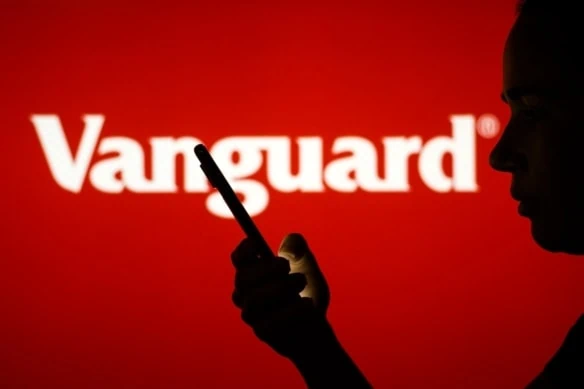Vanguard is many things to many investors, but cost-effective is chief among them.
Indeed, if you’re seeking out the best Vanguard funds—which, hey, that’s how you got here!—you almost certainly have an expectation built into the back of your mind: low fees.
That expectation didn’t come from nowhere. Vanguard has built its reputation in part by innovating a product (the index fund) that could drastically lower fees, but also in part by continuing to find ways to grind all fund expenses, index and actively managed alike, to the bone.
But let’s be real. Cheap, on its own, is crap. The real reason why investors have funneled trillions of dollars into Vanguard Group is because Vanguard’s mutual funds and exchange-traded funds (ETFs) are a combination of low expense ratios and high-quality strategies. It’s a potent combination that has not only led to outperformance for many Vanguard funds—but also ensured that investors get to keep more of those returns.
Today, I’m going to explore some of the best Vanguard mutual funds—a collection of passive and active products that are built for success without breaking the bank. This group of funds also fills multiple needs, with some serving as core portfolio holdings, and others acting as satellite positions you can use to focus on specific opportunities.
And if you prefer exchange-traded funds, no worries! You can check out our list of the best Vanguard ETFs instead.
Disclaimer: This article does not constitute individualized investment advice. These securities appear for your consideration and not as personalized investment recommendations. Act at your own discretion.
Editor’s Note: Tabular data presented in this article are up-to-date as of Oct. 17, 2024.
Table of Contents
Why Vanguard?
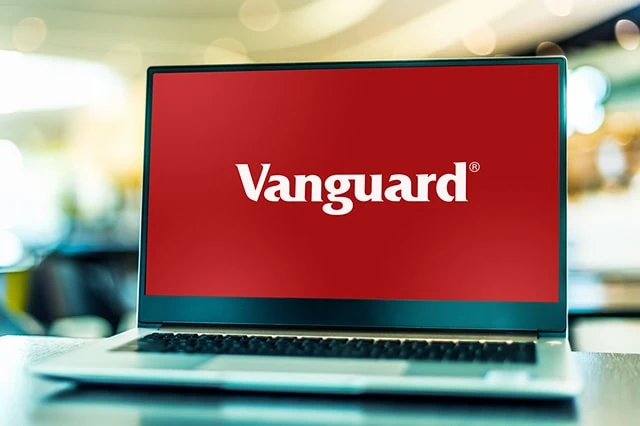
Vanguard Group is one of the largest asset managers in the world, boasting roughly $8 trillion in net assets under management (AUM).
As I mentioned above, one of the primary reasons behind its success is Vanguard’s dirt-cheap expenses. Currently, the firm’s 400-plus funds sport an average asset-weighted expense ratio of just 0.08%, or a mere 80¢ for every $1,000 invested. That’s an astoundingly low number—one that means even when a Vanguard fund isn’t the absolute cheapest in its category, it’s still going to be one of your cheapest options.
These tiny numbers add up to real savings, mind you. As a for-instance, Christine Benz, Morningstar’s Director of Personal Finance and Retirement Planning, wrote in 2023 that in the previous year alone, “Vanguard’s cost advantage saved its investors collectively about $26 billion compared with what they would have shelled out if they had invested in funds with average expenses.”
Much of Vanguard’s success on the fee-fighting front can be chalked up to founder Jack Bogle, who created the first index mutual fund and helped proliferate this fund type. Now, low-cost index funds can be found the world over, bringing costs down for millions of investors—even those who don’t buy Vanguard’s products.
But Bogle, too, was responsible for more than just cheap investing. His investment philosophies helped shape Vanguard into the titan it is today, and sparked a group (the Bogleheads) who energetically follow in his footsteps.
How Were the Best Vanguard Mutual Funds Selected?

Vanguard currently boasts more than 300 mutual funds—not exactly the easiest number to whittle down to a handful. So I’ve started with a quality screen, including only Vanguard mutual funds that have earned the top Morningstar Medalist rating of Gold.
Unlike Morningstar’s Star ratings, which are based upon past performance, Morningstar Medalist ratings are a forward-looking analytical view of a fund. Per Morningstar:
“For actively managed funds, the top three ratings of Gold, Silver, and Bronze all indicate that our analysts expect the rated investment vehicle to produce positive alpha relative to its Morningstar Category index over the long term, meaning a period of at least five years. For passive strategies, the same ratings indicate that we expect the fund to deliver alpha relative to its Morningstar Category index that is above the lesser of the category median or zero over the long term.”
As I’ve written in other Young and the Invested articles, a Medalist rating doesn’t mean Morningstar is necessarily bullish on the underlying asset class or categorization. It’s merely an expression of confidence in the fund compared to its peers.
Also, because one of the primary draws of Vanguard funds is low fees, I am only considering funds whose expense ratios are well below their category average. Honestly, this didn’t do much to narrow the list, as most Vanguard mutual funds are … well, you get the point.
From the remaining universe of several dozen Vanguard funds, I selected a range of products that fit various portfolio goals, are directed by respected fund managers (active) or productive benchmark indexes (passive), and have good to great track records.
So, no more ado—let’s get on with the list.
1. Vanguard 500 Index Fund Admiral Shares

— Style: U.S. large-cap stock
— Assets under management: $552.8 billion
— Expense ratio: 0.04%, or 40¢ per year for every $1,000 invested
— Dividend yield: 1.3%
— Minimum initial investment: $3,000
The Vanguard 500 Index Fund Admiral Shares (VFIAX) is the very first index fund, and still a gold standard in the U.S. mutual fund industry.
No, really. Not only does VFIAX currently garner a Gold Medalist rating from Morningstar, but several other fund providers’ low-cost S&P 500 funds (cut from the same cloth) earn Gold ratings too. That’s because their underlying index, the S&P 500, is a well-diversified benchmark that has simply given mutual fund managers fits for decades.
The vast majority of fund managers who run large-cap funds (funds that invest in larger companies) struggle to consistently beat the S&P 500 Index, particularly after fees. According to S&P Dow Jones Indices, “60% of all active large-cap U.S. equity funds underperformed the S&P 500.” That’s no anomaly: A majority of active managers have now failed to beat the S&P 500 in 21 of the past 24 years.
So if you can’t beat it, join it.
Related: The 7 Best Vanguard Index Funds for Beginners
The Vanguard 500 Index Fund Admiral Shares is an index fund that tracks the S&P 500, a collection of the largest and most dominant U.S. companies. Like many indexes, the S&P 500 is what’s called “market-cap weighted,” which means the larger the company, the more weight the stock has in the index (and thus the more impact it has on returns). Thus, right now, VFIAX dedicates the largest portions of its assets to companies like Microsoft (MSFT), Apple (AAPL), and Nvidia (NVDA), whose market caps are measured in trillions of dollars. It’s also considered to be a “blend” fund, which means it has relatively even exposure to value stocks and growth stocks.
Also worth noting? Turnover—how much the fund tends to buy and sell holdings—is extremely low, too, because only a handful of stocks enter or leave the index in any given year. As a result, VFIAX typically makes little to no capital gains distributions at the end of the year, making it a very tax-efficient investment for taxable brokerage accounts.
Financial experts frequently suggest using an S&P 500 fund as the core of your portfolio given its exposure to hundreds of larger, more financially stable companies across all sectors—from tech to health care to real estate. Because of this diversity of holdings, the S&P 500 not only provides access to the growth of the American economy, but a modest level of dividend income, too. VFIAX’s yield might not seem like much right now. However, reinvested over time, the S&P 500’s dividends make up roughly 35% to 50% of the index’s returns over the very long term (depending on the time period and study you’re looking at).
Lastly, many Vanguard mutual funds have an ETF share class for those who prefer exchange-traded funds. In this case, VFIAX’s sister Vanguard ETF is the Vanguard S&P 500 ETF (VOO), which charges 0.03% annually.
Related: Best Vanguard Retirement Funds for a 401(k) Plan
2. Vanguard Dividend Growth Fund Investor Shares

— Style: U.S. large-cap dividend-growth stock
— Assets under management: $55.0 billion
— Expense ratio: 0.30%, or $3.00 per year for every $1,000 invested
— Dividend yield: 1.6%
— Minimum initial investment: $3,000
If you say to yourself, “I’d like a Vanguard dividend fund because I’d like a higher level of yield,” surprisingly, it doesn’t exactly work like that. Some will provide a considerably higher yield—but not all.
I’ll provide examples of both.
A Vanguard dividend fund that delivers a pretty shrugworthy yield right now is the Vanguard Dividend Growth Investor Shares (VDIGX). But you shouldn’t write it off.
Vanguard says the actively managed VDIGX “focuses on high-quality companies that have both the ability and the commitment to grow their dividends over time.” In other words, the fund might not have a great yield now, but owners of this fund should enjoy a higher “yield on cost” (the yield you’re actually earning based on the price you bought the stock) as the years roll on. Also, dividend growers tend to be high-quality companies; only firms with strong financials and excellent cash flows can afford to keep paying shareholders more every year.
Related: The 7 Best Closed-End Funds (CEFs) With Yields Up to 11%
So, in a way, dividend growth acts like a quality screen, of sorts, ensuring you’re owning a higher grade of stock.
Portfolio Manager Peter Fisher has a tight holding set of roughly 40 predominantly mega-cap equities with bulletproof balance sheets. All of them have raised their payouts for at least a few years, but some have long histories of uninterrupted dividend growth. Procter & Gamble (PG) and Colgate-Palmolive (CL), for instance, are Dividend Kings, which are companies that have raised their dividends annually for at least 50 consecutive years.
It’s worth noting that Fisher has only had sole control over the fund since Jan. 1, 2024. That’s when longtime manager Donald Kilbride stepped down, leaving the reins of VDIGX to his comanager. But Kilbride will continue to provide ideas for the portfolio. And Morningstar, which gives VDIGX a Gold Medalist rating, says “given the new lead manager’s capabilities, knowledge of the approach, and ample analytical support, the strategy continues to have excellent prospects.”
Again, it’s worth noting turnover is low here, too, at 11%, which means in a given year, it trades 11 out of every 100 holdings. So VDIGX is pretty tax-efficient.
Related: Best High-Dividend ETFs for Income-Hungry Investors
3. Vanguard High Dividend Yield Index Fund Admiral Shares

— Style: U.S. large-cap dividend stock
— Assets under management: $13.8 billion
— Expense ratio: 0.08%, or 80¢ per year for every $1,000 invested
— Dividend yield: 2.8%
— Minimum initial investment: $3,000
If you’re more interested in securing a higher yield now, the Vanguard High Dividend Yield Index Fund Admiral Shares (VHYAX) is going to be one of the best Vanguard funds you can find.
Related: 7 Best Schwab Funds You Can Buy: Low Fees, Low Minimums
As the name implies, Vanguard High Dividend Yield Index is focused on delivering more income. It does so through a list of about 450 total components that are picked based on their current income potential—not hopes of bigger future paydays (though some holdings do grow their dividends, too).
That means this high-dividend-yield mutual fund excludes companies like Apple that pay dividends but offer only modest yield, and instead has a bias toward companies such as JPMorgan Chase (JPM) and Exxon Mobil (XOM) that pay significantly more than the average large-cap stock.
Naturally, this focus on income also means it focuses differently on sectors than the above funds. For instance, financials make up more than 20% of holdings, followed by roughly 12% weightings to industrials, consumer staples, and health care.
VHYAX is also offered in ETF form: The Vanguard High Dividend Yield ETF (VYM) costs 0.06% annually.
Related: 7 Best Schwab Index Funds for Thrifty Investors
4. Vanguard Strategic Small-Cap Equity Fund

— Style: U.S. small-cap stock
— Assets under management: $1.8 billion
— Expense ratio: 0.26%, or $2.60 per year for every $1,000 invested
— Dividend yield: 1.0%
— Minimum initial investment: $3,000
If your primary investing concern is growth, and you have a pretty healthy risk appetite, you might get more bang for your buck by investing in small-cap stocks.
As a general rule, smaller companies (usually considered to be those with market caps of $2 billion or less) have more potential for explosive growth. For one, as they say, it’s much easier to double your revenues from $1 million than $1 billion. Also, as these stocks become noticed by institutional investors and fund managers, large investments can help drive their prices further higher, too.
Related: The 7 Best Fidelity Index Funds for Beginners
The rub is that smaller stocks tend to be more volatile. A smaller company’s revenues might be dependent on just one or two products or services—meaning a single disruption could have massive financial consequences. Small caps also have less access to capital than their larger peers, so they’re less likely to get a lifeline should they suffer from broader economic headwinds.
Buying these kinds of stocks individually is a high-risk, high-reward proposal—a company could feasibly double or get cut in half overnight. But if you wanted to harness some of the upside potential of small caps while tamping down risk, you could invest in a small-company fund like the Vanguard Strategic Small-Cap Equity Fund (VSTCX).
VSTCX, managed by Cesar Orosco, invests in more than 500 small-cap equities that can be found within the MSCI US Small Cap 1750 Index. Orosco selects stocks that have similar risk to the index, but that he believes will provide better performance. The result is a diversified portfolio blending value stocks and growth stocks that have produced much better earnings growth as a whole than the benchmark index’s average. That, as well as exceedingly low management fees compared to peers, makes VSTCX one of the best Vanguard mutual funds I’ve reviewed.
Just note that, like with many small-cap funds, turnover is a little on the high side at 70%, so this is best held in tax-advantaged accounts like an individual retirement account (IRA), health savings account (HSA), or, if available, a 401(k).
Related: How to Get Free Stocks for Signing Up: 10 Apps w/Free Shares
5. Vanguard Mid-Cap Index Fund Admiral Shares
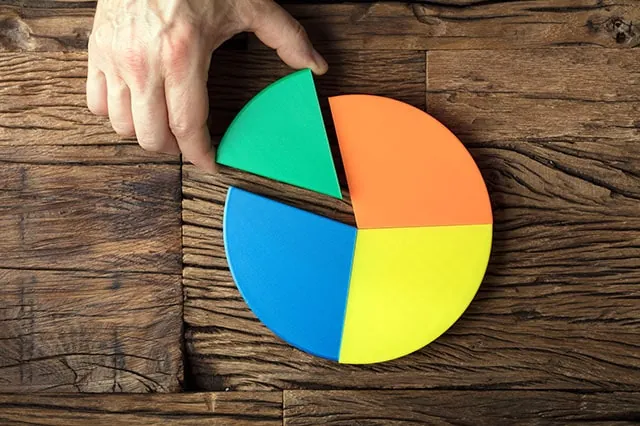
— Style: U.S. mid-cap stock
— Assets under management: $63.2 billion
— Expense ratio: 0.05%, or 50¢ per year for every $1,000 invested
— Dividend yield: 1.5%
— Minimum initial investment: $3,000
Mid-cap stocks (typically considered to be companies between $2 billion and $10 billion in market cap) are the “Goldilocks” holding of the investment world. They’re bigger, more stable, and have better access to capital than their small-cap brethren, but they tend to be nimbler and have more upside potential to their big brothers in the large-cap space. Unfortunately, they often go ignored by people who gravitate either toward big, “safe” blue chips or potent small-caps … to their detriment.
Related: 7 Best Fidelity ETFs for 2024 [Invest Tactically]
“In any given 1-year rolling period since 2003, small-, mid-, and large-cap stocks have outperformed 33%, 26%, and 41% of the time,” says investment company Hennessy Funds. “However, the longer mid-cap stocks are held, the more often they outperformed. In fact, 60% of the time, mid-caps outperformed small- and large-cap stocks over any 10-year rolling period in the past 20 years.”
Better still? During the 20-year period (through 9/30/23) that Hennessy studied, it found that while mid-caps delivered higher risk than large caps, they delivered better returns … and they generated both lower risk and higher returns than small caps.
If you’d like to inject your portfolio with some mid-cap exposure, you can do so cost-effectively with the Vanguard Mid-Cap Index Fund Admiral Shares (VIMAX). This Gold-rated fund owns roughly 340 stocks—it’s not a pure mid-cap fund, with roughly 10% to 15% of assets veering into large-cap territory. But VIMAX also boasts less concentration among top holdings than similar funds; indeed, no single stock accounts for more than 1% of assets, minimizing single-stock risk.
Again, as is common among Vanguard index mutual funds, VIMAX has a sister ETF: the Vanguard Mid-Cap ETF (VO), which charges 0.04% annually.
Related: 7 Best Schwab ETFs to Buy [Build Your Core for Cheap]
6. Vanguard International Dividend Appreciation Index Fund Admiral Shares

— Style: Foreign large-cap growth stock
— Assets under management: $411.2 million
— Expense ratio: 0.16%, or $1.60 per year for every $1,000 invested
— Dividend yield: 1.9%
— Minimum initial investment: $3,000
You might have noticed that all of the above funds have had a specifically U.S.-centric bent. That’s good—U.S. markets have long been among the most productive in the world, and if you believe in the American economy’s ability to keep growing, that should remain the case.
But most experts would tell you that it’s worth having at least some international exposure, and one way to do that is through the Vanguard International Dividend Appreciation Index Fund Admiral Shares (VIAAX).
Related: Best Vanguard Retirement Funds for an IRA
Vanguard International Dividend Appreciation Index has a similar thrust to Vanguard Dividend Growth in that it’s interested in owning high-quality companies, which it does by identifying and holding companies with a history of increasing their dividends. VIAAX tracks the S&P Global Ex-U.S. Dividend Growers Index, which consists of international firms that have improved their payouts on an annual basis for at least seven consecutive years. Also, as an additional quality screen, the index excludes the 25% highest-yielding eligible companies from the index. Without getting too far into the weeds, high dividends can sometimes be the result of significant price drops and in some cases might not be sustainable.
VIAAX is most heavily invested in developed European and Asian markets such as Japan, Switzerland, and the U.K., though it also has a high concentration in Canadian stocks, as well as some exposure to emerging markets such as India and Mexico. But many of its 300-plus holdings will be plenty familiar to Americans—it’s loaded with blue-chip multinational firms like Swiss food giant Nestlé (NSRGY), Japanese tech titan Sony (SNE), and Canadian financial Toronto-Dominion Bank (TD). And, as is common with developed-country funds, the yield, currently at 2%, is higher than comparable U.S. funds.
You can get this Vanguard fund as an ETF, too: the Vanguard International Dividend Appreciation ETF (VIGI), which charges 0.15% annually.
Related: Best Schwab Retirement Funds for an IRA
7. Vanguard Intermediate-Term Bond Index Fund Admiral Shares

— Style: Intermediate-term core bond
— Assets under management: $17.8 billion
— Expense ratio: 0.07%, or 70¢ per year for every $1,000 invested
— SEC yield: 4.2%*
— Minimum initial investment: $3,000
Most investors will want some exposure to bonds—debt issued by governments, companies, and other entities that pay interest to bondholders. But how much will largely depend on your age.
Bonds tend to be much less volatile than stocks, for better or worse; it limits downside, yes, but it also limits upside. Instead, most of the return from bonds comes from the steady stream of interest income they produce. They’re not great for generating wealth, which is your prime concern when you’re younger, but they’re outstanding for protecting wealth, which becomes increasingly pivotal as you age.
But it’s tough to go out and buy a single bond. Data and research on individual issues is much thinner than it is for publicly traded stocks, plus, some bonds have minimum investments in the tens of thousands of dollars. So, your best (and most economical) bet is to buy a bond fund, which can provide you with access to hundreds if not thousands of bonds.
Related: The 7 Best Closed-End Funds (CEFs) That Yield Up to 12%
One well-respected option is the Vanguard Intermediate-Term Bond Index Fund Admiral Shares (VBILX). This is a “core” bond fund that invests in several bond types, including:
— Treasury bonds (bonds issued by the U.S. government)
— Agency bonds (bonds issued by a U.S. government-sponsored department or enterprise)
— Corporate bonds (bonds issued by a company)
— Foreign sovereign bonds (bonds issued by foreign governments)
VBILX holds more than 2,200 intermediate-term bonds, which are bonds that mature in five to 10 years. It also only holds “investment-grade bonds”—bonds that the credit ratings agencies have deemed to have varying low levels of risk of default. In short, this is a fairly high-quality, moderate-risk bond fund. Duration (a measure of interest-rate risk) is 6.2 years, which implies that a 1-percentage-point increase in interest rates would lead to a 6.2% decline in the fund, and vice versa.
Related: 10 Best Dividend Stocks to Buy [Steady Eddies]
Importantly, VBILX and most other Vanguard mutual funds have a minimum investment of $3,000. So if you don’t have that much to spend, you can always buy the ETF version—the Vanguard Intermediate Term Bond ETF (BIV, 0.04% expenses)—for the price of one share, which currently sits around $77. Or if you have a brokerage account that lets you buy fractional shares, you might be able to buy a piece of BIV for as little as a dollar!
* SEC yield reflects the interest earned across the most recent 30-day period. This is a standard measure for funds holding bonds and preferred stocks.
Make sure you sign up for The Weekend Tea, Young and the Invested’s free weekly newsletter that over 10k monthly readers use to level up their money know-how.
8. Vanguard Short-Term Treasury Index Fund Admiral Shares

— Style: Short-term U.S. Treasury bond
— Assets under management: $2.7 billion
— Expense ratio: 0.07%, or 70¢ per year for every $1,000 invested
— SEC yield: 3.8%
— Minimum initial investment: $3,000
Just like stocks, bonds have varying levels of risk and potential reward. The Vanguard Short-Term Treasury Index Fund Admiral Shares (VSBSX) focuses on a subset of bonds that have very low risk for two reasons: they have short maturities, and they’re issued by the U.S. Treasury.
Related: The 7 Best Mutual Funds for Beginners
Maturity helps determine risk. Generally speaking, the longer the bond, the greater the risk that the bond might not be repaid. Interest rates come into play, too. When rates go higher, new bonds pay more, which tempt people to sell their old bonds for the new, higher-paying bonds. But the temptation is much greater when you’re dealing with longer-term bonds with lots of payments remaining—and not so great for short-term bonds with one or just a couple payments left.
Meanwhile, U.S. Treasury bonds, which are backed by the full faith and credit of the U.S. government, are some of the highest-rated bonds on the planet. Is there 100% certainty they’ll be repaid? No. But is there a higher likelihood of repayment than the vast majority of issuers out there? You betcha.
Related: The 7 Best Index Funds for Beginners
VSBSX invests in fewer than 100 Treasury bond issues with maturities of between one and three years. And the lower risk is reflected in the averaged duration, which currently sits at just 1.9 years—so while a 1-percentage-point hike in interest rates would knock Vanguard Intermediate-Term Bond Index 6.2% lower, Vanguard Short-Term Treasury Index theoretically would only decline by 1.9%. The flip side? VSBSX wouldn’t rise as much if interest rates declined.
But that’s OK, as long as you know what you’re buying! If all you want is portfolio protection that can still generate some yield (just below 4% currently), VSBSX is one of the best Vanguard mutual funds you can buy. Or, if you prefer ETFs, you can purchase the Vanguard Short-Term Treasury ETF (VGSH, 0.04% expenses) instead.
Related: 12 Best Investment Opportunities for Accredited Investors
9. Vanguard Wellington Fund Investor Shares
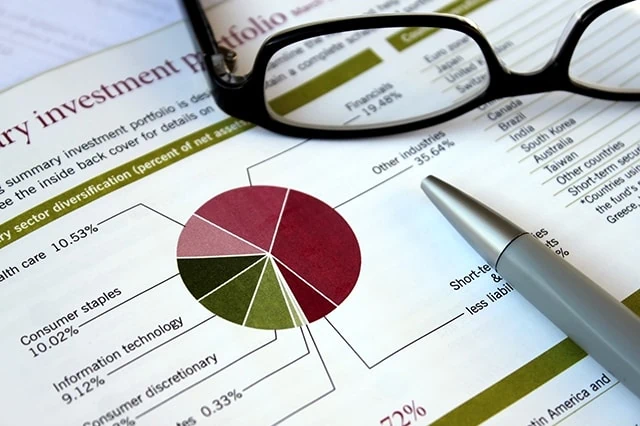
— Style: Moderate allocation
— Assets under management: $13.7 billion
— Expense ratio: 0.26%, or $2.60 per year for every $1,000 invested
— Dividend yield: 2.1%
— Minimum initial investment: $3,000
Vanguard Wellington Fund Investor Shares (VWELX) is Vanguard’s oldest mutual fund—a “balanced” or “allocation” product (read: stocks and bonds) that has been around since 1929. It’s managed by Wellington Management, an investment management company with nearly a century of operational experience.
Related: The 7 Best T. Rowe Price Funds to Buy and Hold
Wellington, which is considered a moderate allocation fund, invests about two-thirds of assets in stocks, and the other third in bonds. The stock portion of the portfolio currently holds 77 predominantly large-cap stocks with a median market cap of over $200 billion. It’s a “who’s who” of blue chips such as Microsoft, Apple, UnitedHealth (UNH), and Procter & Gamble (PG). This includes a little exposure to international stocks—predominantly developed-country names like Shell (SHEL) and AstraZeneca (AZN).
The bond portfolio is much more broadly diversified, at more than 1,300 investment-grade issues. The majority of that (roughly two-thirds) is invested in corporate bonds, with another 21% in Treasuries, and the rest peppered across mortgage-backed securities (MBSes), foreign sovereign bonds, and other debt.
Related: The 7 Best Dividend ETFs [Get Income + Diversify]
Put more succinctly: Wellington is a one-stop shop for your core large-cap stock and bond needs, and its 0.25% in annual expenses is very inexpensive for the skilled management and strong performance track record you’re getting in return. Just make sure you’re considering your own investment needs with this fund—if you don’t want a third of your portfolio to be in bonds, you’ll want to put additional money into individual stocks, equity funds, and/or alternative investments.
Wellington has a fair bit of turnover (40%) and generates a decent chunk of interest income from its bond portfolio. So, if you’re going to invest in VWELX, it makes sense to do so in a tax-advantaged account.
Related: 9 Monthly Dividend Stocks for Frequent, Regular Income
10. Vanguard Wellesley Income Fund Investor Shares

— Style: Moderately conservative allocation
— Assets under management: $9.0 billion
— Expense ratio: 0.23%, or $2.30 per year for every $1,000 invested
— SEC yield: 3.7%*
— Minimum initial investment: $3,000
Another term for Wellington is a “portfolio in a can.” You see, because it holds most of what you’d want in an investment portfolio—mostly U.S. stocks and bonds, with a little international exposure—you theoretically could invest your entire nest egg in the fund and call it a day.
However, what if you wanted a portfolio in a can like Wellington but thought that its 66/33 stock-bond split was just too aggressive?
Related: Best Target Date Funds: Vanguard vs. Schwab vs. Fidelity
Enter Vanguard Wellesley Income Fund Investor Shares (VWINX), a “moderately conservative” allocation fund that’s much more defensively positioned. Here, bonds make up more than 60% of the portfolio. VWINX holds well more than 1,200 different debt issues—primarily corporate debt, but also Treasury and agency bonds, and even sprinklings of foreign bonds and MBSes. The remaining equity portion is spread across roughly 70 stocks or so, with a distinct value tilt and with a little exposure to developed international markets.
VWINX has both a terrific track record and well-regarded management.
“The two lead managers [Matthew Hand and Loren Moran] avoid making large shifts between stocks or bonds; instead, they’ve kept the equity allocation within a 4-percentage-point range over their shared tenure,” says Morningstar analyst Stephen Margaria. “Keeping the stock/bond split relatively steady means the team’s strength of security selection, rather than asset-allocation decisions, will be the primary driver of returns, which should benefit long-term shareholders.”
* SEC yield is used instead of dividend yield here because of the fund’s bond-heavy allocation.
Related: 5 Best Vanguard Retirement Funds [Start Saving in 2024]
How Does Your Portfolio Look? Ask Empower

More than 3 million users are putting their retirement on track by putting Empower’s tools and/or advisory services to work for them.
Wondering how your portfolio is shaping up? Sign up with Empower to use its free Investment Checkup tool, which can help you assess your portfolio risk, analyze past performance, and get a target allocation for your portfolio. You can even compare your portfolio to both the S&P 500 and Empower’s “Smart Weighting” Recommendation.
And if you want a fuller advisory experience? Empower’s full-service Wealth Management account pairs the firm’s tools with skilled human management. Empower will create a recommended portfolio spanning six asset classes, then help you implement your plans by giving you access to financial advisors who can guide you through retirement planning, college savings, workplace stock options, and more.
Regardless of how much money you bring to the table, if you sign up, you will be given the option to schedule an initial 30-minute financial consultation with an Empower advisor.
What is the Minimum Investment Amount on Vanguard Mutual Funds?

Vanguard funds are known for being shareholder-friendly. The Vanguard mutual fund company blazed new trails with the index fund, and Vanguard has done more than any other investment firm to keep costs to a minimum for investors.
But there is one hitch. Many of Vanguard’s cheapest funds in terms of fees have initial investment minimums of around $3,000.
If that is a problem for you, don’t sweat it. Most popular Vanguard index funds are also available as ETFs. Most self-directed HSAs will allow you to buy as little as one share, and some even allow for fractional shares. And if you use a commission-free brokerage, you can buy those ETFs without incurring additional fees. ETF prices vary, of course, but many cost less than $100, and they rarely exceed $400 per share.
What Is a Mutual Fund?

A mutual fund is an investment company that pools money from many investors to buy stocks, bonds or other securities. The investors get the benefits of professional management and certain economies of scale. A pool of potentially millions or even billions of dollars is large enough to diversify and might have access to investments that would be impractical for an individual investor to own.
Here’s an example: An investor wanting to mimic the S&P 500 Index (an index made up of 500 large, U.S.-listed companies) would generally have a hard time buying and managing a portfolio of 500 individual stocks, especially in the exact proportions of the S&P 500 Index. Another example: An investor wanting a diversified bond portfolio might have a hard time building one when individual bond issues can have minimum purchase sizes of thousands (or tens of thousands!) of dollars.
Equity funds or bond funds will generally be a far more practical solution.
Actively Managed Funds vs. Index Funds
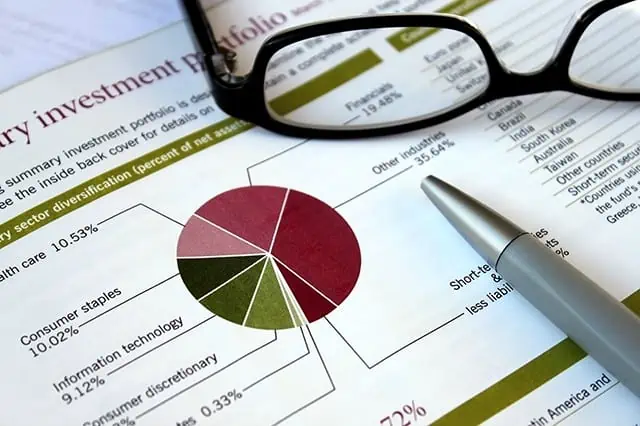
There are infinite types of mutual funds, but all can be divided into two main camps:
— actively managed funds
— passively managed funds, also known as passive funds or, most commonly, index funds
Actively managed funds have professional managers that use their discretion to buy and sell securities. Whether they are value funds, growth funds, or anything in between, they are all essentially run the same way: A manager or team of managers buys and sells stocks, bonds, or other securities in the pursuit of price returns, dividends/income, or both.
Related: The 7 Best Mutual Funds for Beginners
Index funds, in contrast, are passive. There’s no manager actively looking to “beat the market.” The fund is simply looking to copy an index—which is based on a set of rules that the index automatically applies—enjoying that underlying investment exposure. Actively managed stock funds will try to cherry pick the stocks or bonds they like best. An index fund simply buys whatever its rules say to buy, then lets that portfolio run until it’s time to “rebalance” (apply the rules again).
Related: 6 Best Stock Recommendation Services [Stock Tips + Picks]
The primary advantages of actively managed funds is that a talented manager can potentially outperform over time and may be adept at navigating a difficult period such as a bear market. But with an index fund, you generally get much lower costs in terms of management fees and trading expenses, better tax efficiency and performance that often ends up being better than that of many active managers.
What Are Balanced Mutual Funds?
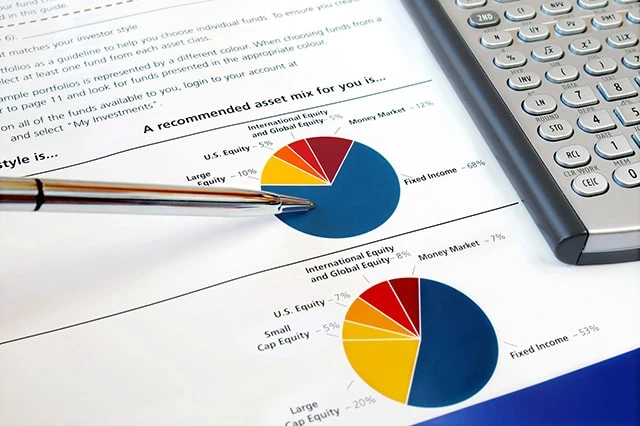
Balanced mutual funds, sometimes also called “hybrid funds” or “allocation funds,” hold both stocks and bonds. However, while the name might imply that all balanced funds hold an equal amount of stocks and bonds, that’s not quite the case.
Some balanced funds are “aggressive” and dedicate far greater assets to stocks than bonds—say, 80/20 stocks, or 70/30 stocks. Meanwhile, some balanced funds are “conservative” and invest most of their assets in bonds. Still more are much closer to a 50/50 split.
Like Young and the Invested’s content? Be sure to follow us.
How Are Mutual Funds Different From Exchange-Traded Funds?

There is a lot of overlap between traditional mutual funds and their cousins, exchange-traded funds (ETFs). That’s because exchange-traded funds are very similar to mutual funds, but with a few different traits.
Related: The 24 Best ETFs to Buy for a Prosperous 2024
Like traditional mutual funds, an ETF will hold a basket of stocks, bonds, and other securities. These can be broad and tied to a major index like the S&P 500, or they can be exceptionally narrow and focus on a specific sector or even a specific trading strategy. For the most part, anything that can be held in an exchange traded fund can also be held in a mutual fund.
But there are some major differences. When you invest in a mutual fund, you (or your broker) actually send money to the manager, who in turn uses the cash to buy stocks or other investments. When you want to sell, the manager will sell off a tiny piece of the securities the mutual fund owns and send you the proceeds. Money generally enters or exits the fund once per day.
Related: Best Target Date Funds: Vanguard vs. Schwab vs. Fidelity
Exchange-traded funds, on the other hand, trade on the New York Stock Exchange or another major exchange like a stock. If you want to buy shares, you don’t send the manager money; you just buy shares from another investor on the open market.
There are two advantages here. The first is that ETFs allow for intraday liquidity. If you want to buy or sell in the middle of the trading day—or multiple times throughout the trading day—you can.
The second advantage is tax efficiency. In a traditional mutual fund, redemptions by investors can generate selling by the manager that creates taxable capital gains for the remaining investors who didn’t sell. This doesn’t happen with ETFs, as the manager isn’t forced to buy or sell anything when an investor sells their shares.
Related: The 9 Best ETFs for Beginners
Why Does a Fund’s Expense Ratio Matter So Much?

Every dollar you pay in expenses is a dollar that comes directly out of your returns. So, it is absolutely in your best interests to keep your expense ratios to an absolute minimum.
The expense ratio is the percentage of your investment lost each year to management fees, trading expenses and other fund expenses. Because index funds are passively managed and don’t have large staffs of portfolio managers and analysts to pay, they tend to have some of the lowest expense ratios of all mutual funds.
This matters because every dollar not lost to expenses is a dollar that is available to grow and compound. And over an investing lifetime, even a half a percent can have a huge impact. If you invest just $1,000 in a fund generating 5% per year after fees, over a 30-year horizon, it will grow to $4,116. However, if you invested $1,000 in the same fund, but it had an additional 50 basis points in fees (so it only generated 4.5% per year in returns), it would grow to only $3,584 over the same period.
Related: 6 Best Stock Recommendation Services [Stock Picking + Tips]

Stock recommendation services are popular shortcuts that help millions of investors make educated decisions without having to spend hours of time doing research. But just like, say, a driving shortcut, the quality of stock recommendations can vary widely—and who you’re willing to listen to largely boils down to track record and trust.
The natural question, then, is “Which services are worth a shot?” We explore some of the best (and best-known) stock recommendation services.
Related: 12 Best Long-Term Stocks to Buy and Hold Forever

As even novice investors probably know, funds—whether they’re mutual funds or exchange-traded funds (ETFs)—are the simplest and easiest ways to invest in the stock market. But the best long-term stocks also offer many investors a way to stay “invested” intellectually—by following companies they believe in. They also provide investors with the potential for outperformance.
So if your’e looking for a starting point for your own portfolio, look no further. Check out our list of the best long-term stocks for buy-and-hold investors.
Related: Best Target-Date Funds: Vanguard vs. Schwab vs. Fidelity

Looking to simplify your retirement investing? Target-date funds are a great way to pick one fund that aligns with when you plan to retire and then contribute to it for life. These are some of the best funds to own for retirement if you don’t want to make any investment decisions on a regular basis.
We provide an overview of how these funds work, who they’re best for, and then compare the offerings of three leading fund providers: Vanguard, Schwab, and Fidelity.
Related: 9 Best Monthly Dividend Stocks for Frequent, Regular Income

The vast majority of American dividend stocks pay regular, reliable payouts—and they do so at a more frequent clip (quarterly) than dividend stocks in most other countries (typically every six months or year).
Still, if you’ve ever thought to yourself, “it’d sure be nice to collect these dividends more often,” you don’t have to look far. While they’re not terribly common, American exchanges boast dozens of monthly dividend stocks.
Please Don’t Forget to Like, Follow and Comment

Did you find this article helpful? We’d love to hear your thoughts! Leave a comment with the box on the left-hand side of the screen and share your thoughts.
Also, do you want to stay up-to-date on our latest content?
1. Follow us by clicking the [+ Follow] button above,
2. Subscribe to The Weekend Tea, our weekly newsletter to read more about investing, spending, taxes, and more, and
3. Give the article a Thumbs Up on the top-left side of the screen.
4. And lastly, if you think this information would benefit your friends and family, don’t hesitate to share it with them!




